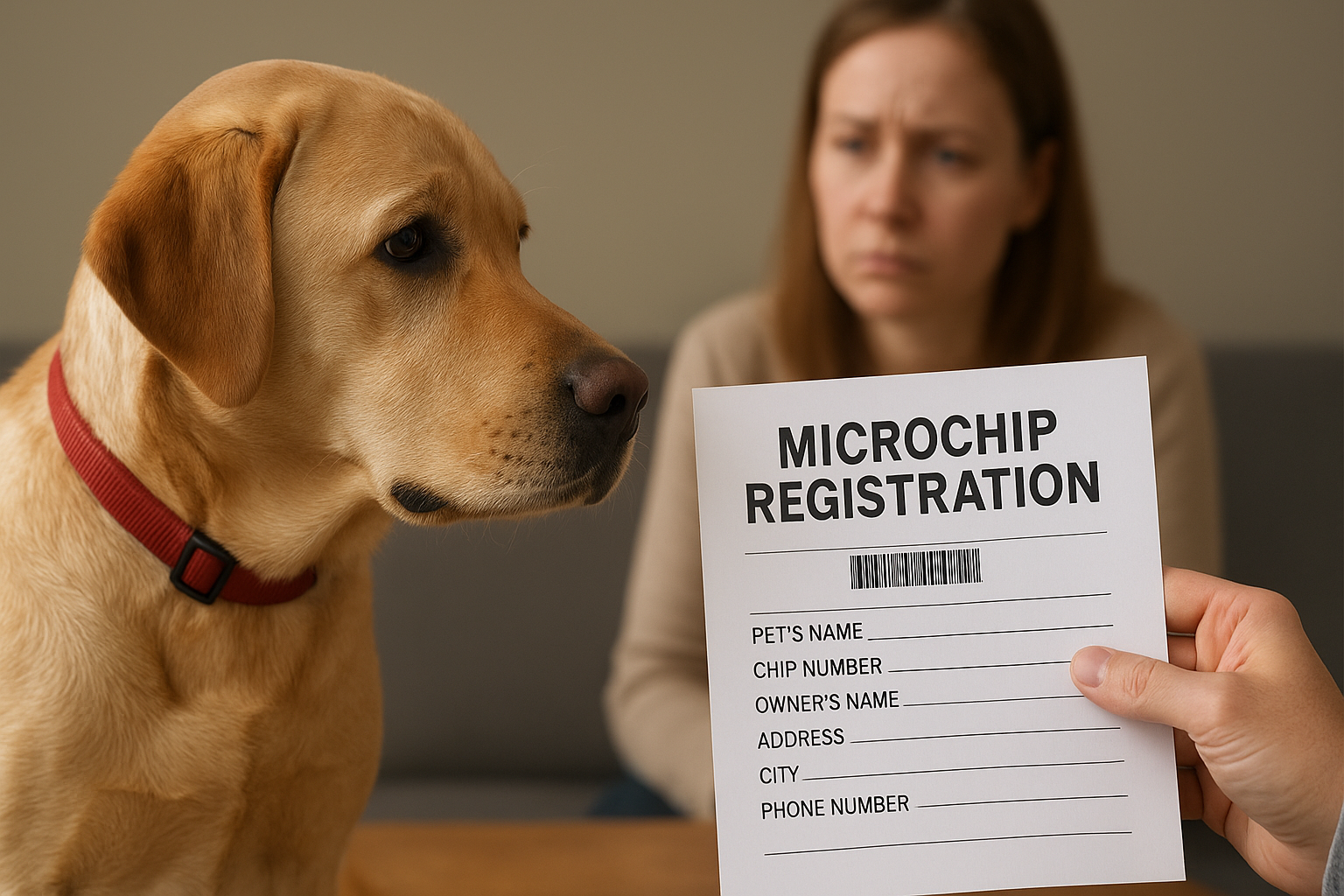Don’t Let Pet Microchip Records Lapse: Keep Your Pet Safe and Avoid Fines

Outdated pet microchips can lead to costly fines
Imagine the panic of losing your pet, only to discover their microchip information is outdated—and now you are facing a hefty fine. That is what happened to one pet owner in Wiltshire, and it highlights an important truth: keeping microchip details current is not just responsible, it is a legal requirement. Understanding how microchipping works and what you must do to stay compliant can save you stress, money, and possibly your pet’s life.
The Importance of Microchipping
Microchipping provides permanent identification for pets, ensuring they can be traced back to their owners if they go missing. A vet or licensed professional inserts a tiny chip under the skin, which is linked to a database containing the owner’s details. This system helps authorities reunite lost or stolen animals with their families, confirm legal ownership, and improve animal welfare.
When Outdated Information Becomes a Problem
In Wiltshire, a dog owner was fined nearly £850 because her contact details were not updated in the microchip database. After her dog was found, the council attempted to get in touch, but outdated information made this impossible. The fine included penalties, council costs, and a victim surcharge, showing just how expensive non-compliance can be.
What Responsible Pet Owners Must Do
Having your pet microchipped is just the first step. You also need to keep your details accurate and current. That means updating the database whenever you move house, change phone numbers, or transfer ownership of your pet. Some councils allow a period of up to 21 days for making these updates, but the best practice is to do it immediately.
The Role of Local Authorities
Councils enforce microchip regulations to ensure lost pets can be returned quickly and that owners remain accountable. Proper microchip management reduces the number of strays, improves animal welfare, and supports community safety. By treating compliance as a priority, pet owners help create a system that works for everyone.
What Every Pet Owner Should Keep in Mind
Microchipping is more than just a recommendation—it is a legal requirement. Keeping details updated is as important as the initial procedure, and the costs of neglecting this responsibility are far higher than the small effort of logging in and making changes.
Taking Action Without Delay
If you are unsure about your pet’s microchip details, now is the time to act. Locate your pet’s chip number, access the database, and confirm your information is correct. If anything has changed, update it right away. Your vet or local council can provide support if you are not sure how to proceed.
Conclusion
A microchip is a lifeline for your pet in times of crisis, but it only works if the information is accurate. Staying on top of updates protects your pet, saves you from costly fines, and gives you peace of mind. Responsible ownership starts with something simple—making sure your pet’s microchip details are always up to date.
Popular Products
-
 Classic Oversized Teddy Bear
Classic Oversized Teddy Bear$23.78 -
 Gem's Ballet Natural Garnet Gemstone ...
Gem's Ballet Natural Garnet Gemstone ...$171.56$85.78 -
 Butt Lifting Body Shaper Shorts
Butt Lifting Body Shaper Shorts$95.56$47.78 -
 Slimming Waist Trainer & Thigh Trimmer
Slimming Waist Trainer & Thigh Trimmer$67.56$33.78 -
 Realistic Fake Poop Prank Toys
Realistic Fake Poop Prank Toys$99.56$49.78